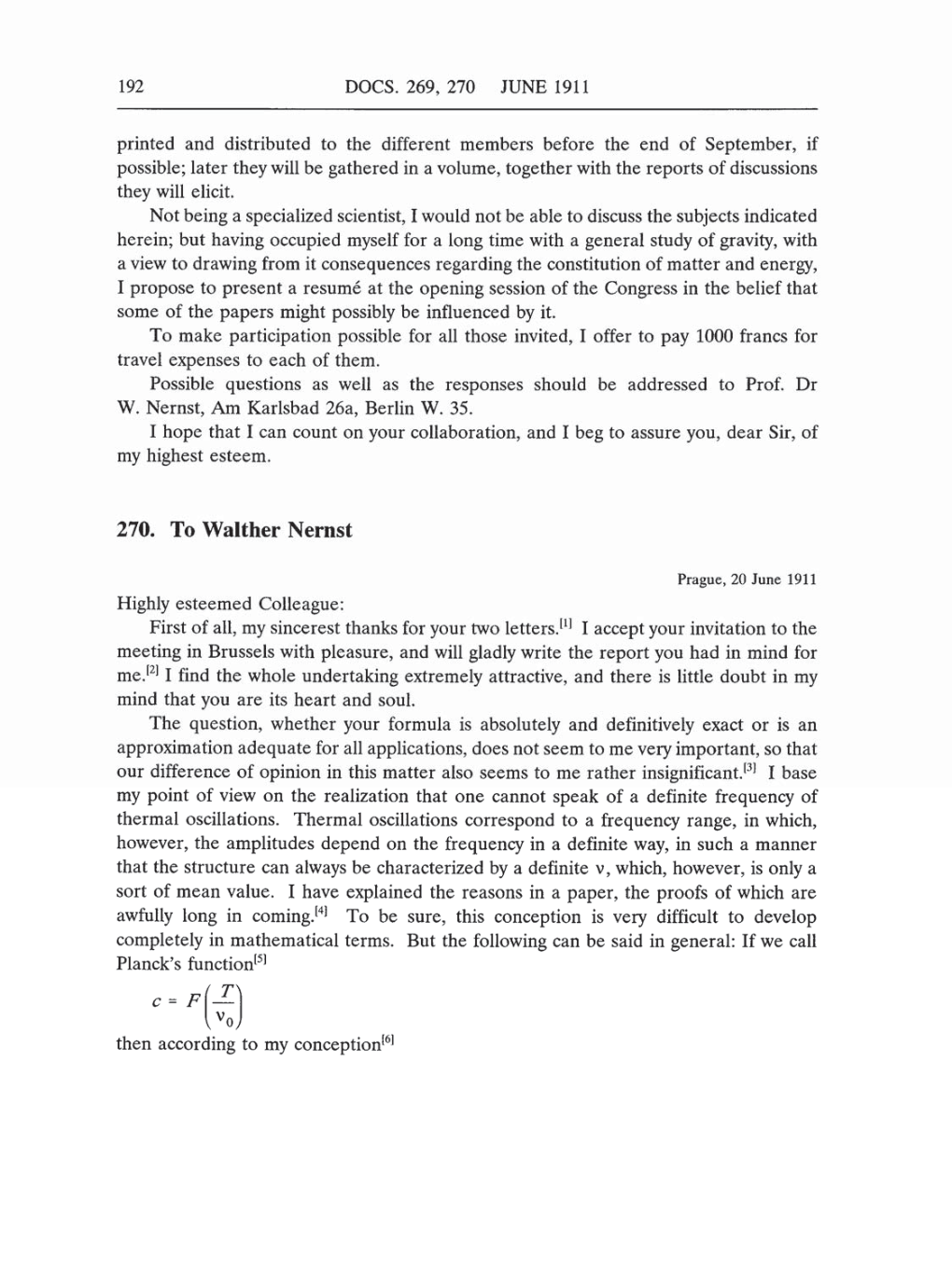192
DOCS.
269,
270 JUNE
1911
printed
and distributed
to the
different members before
the
end of
September,
if
possible;
later
they will
be
gathered
in
a
volume, together
with
the
reports
of
discussions
they
will elicit.
Not
being
a specialized
scientist,
I would not be able to discuss
the
subjects
indicated
herein;
but
having occupied myself
for
a long
time with
a
general study
of
gravity,
with
a
view to
drawing
from
it
consequences regarding
the constitution of
matter
and
energy,
I
propose
to
present
a resume
at
the
opening
session
of the
Congress
in
the belief that
some
of the
papers
might possibly
be
influenced
by
it.
To make
participation
possible
for all
those
invited,
I
offer
to
pay
1000
francs
for
travel
expenses
to
each of
them.
Possible
questions
as
well
as
the
responses
should be
addressed
to
Prof.
Dr
W.
Nernst,
Am Karlsbad
26a,
Berlin
W.
35.
I
hope
that
I
can
count
on
your collaboration,
and
I
beg
to
assure
you,
dear
Sir,
of
my
highest
esteem.
270. To
Walther Nernst
Prague,
20
June
1911
Highly
esteemed
Colleague:
First of
all,
my
sincerest thanks
for
your
two letters.[1] I
accept your
invitation
to
the
meeting
in
Brussels
with
pleasure,
and
will
gladly
write
the
report
you
had
in mind for
me.[2]
I
find
the
whole
undertaking
extremely
attractive,
and there
is little
doubt in
my
mind
that
you are
its
heart
and soul.
The
question,
whether
your
formula
is
absolutely
and
definitively
exact
or
is
an
approximation adequate
for all
applications,
does
not
seem
to
me very
important,
so
that
our
difference of
opinion
in this matter also
seems
to
me
rather
insignificant.[3]
I base
my
point
of
view
on
the realization that
one
cannot
speak
of
a
definite
frequency
of
thermal
oscillations. Thermal
oscillations
correspond
to
a
frequency range,
in
which,
however,
the
amplitudes
depend
on
the
frequency
in
a
definite
way,
in such
a
manner
that the
structure
can
always
be
characterized
by
a
definite
v, which, however,
is
only a
sort
of
mean
value.
I
have
explained
the
reasons
in
a
paper,
the
proofs
of
which
are
awfully long
in
coming.[4]
To
be
sure,
this
conception is
very
difficult to
develop
completely
in
mathematical
terms.
But
the
following can
be said in
general:
If
we
call
Planck's
function[5]
T\
c
=
F
\
V0/
then
according to
my
conception[6]
